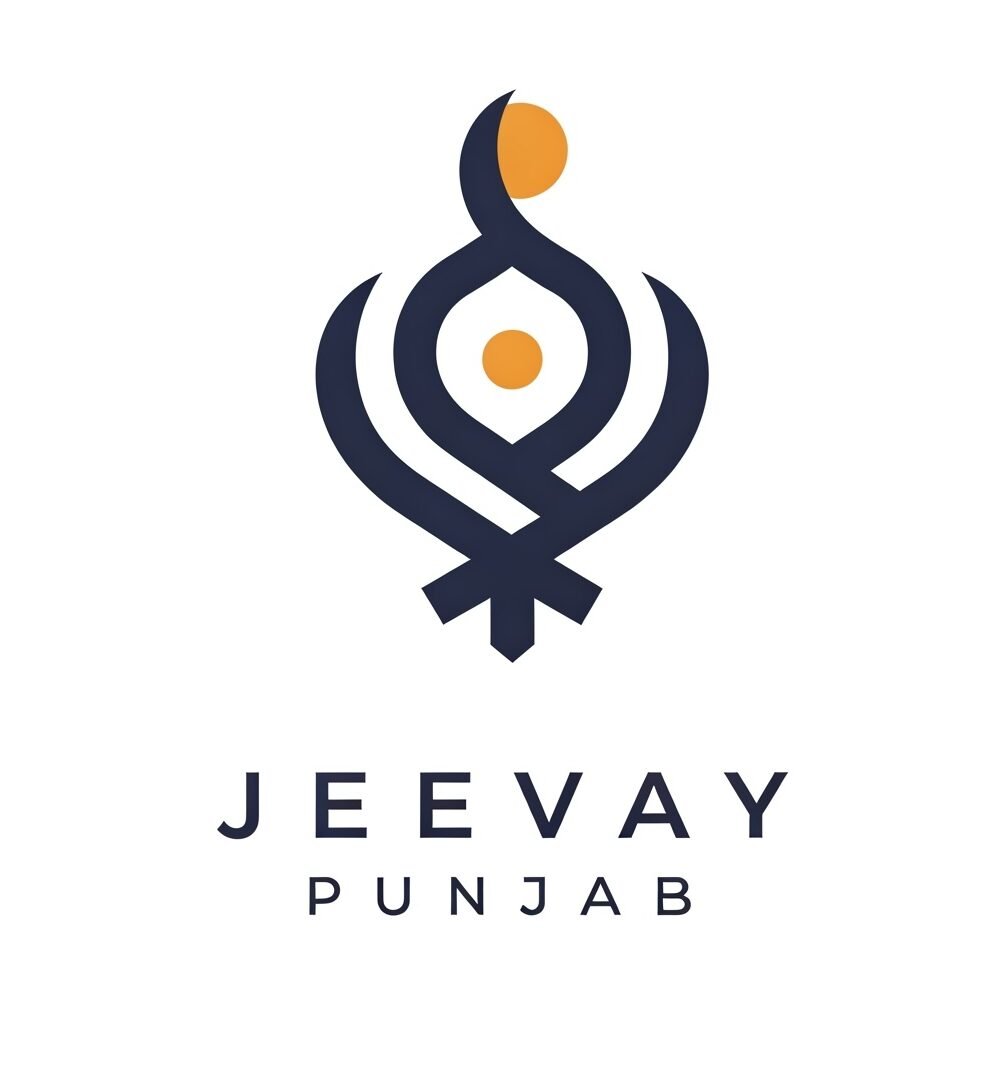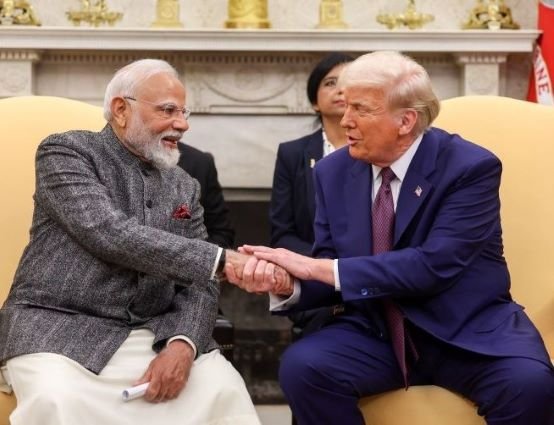Despite five rounds of intense trade negotiations, the highly anticipated trade agreement between India and the United States has fallen through, leaving New Delhi blindsided by an unexpected tariff hike of 25% imposed by U.S. President Donald Trump, effective August 1, 2025. The Indian government, which was anticipating a favourable outcome with tariff caps at 15%, is now grappling with penalties, particularly over continued oil imports from Russia. The sudden escalation has sent ripples through the diplomatic and economic corridors of both nations, revealing a story of miscommunication, overconfidence, and missed opportunities.
Indian officials were so confident of securing the trade pact that they even briefed journalists about the likelihood of tariff limits and forthcoming presidential announcements. Prime Minister Narendra Modi’s administration believed the deal was almost complete following multiple visits by Indian Commerce Minister Piyush Goyal to Washington and U.S. Vice President J.D. Vance’s meetings in Delhi. In the weeks preceding the deadline, hopes were high that Trump would personally announce the agreement. Instead, the U.S. leader moved swiftly to finalise trade pacts with Japan, the EU, and even extended surprisingly generous terms to Pakistan, leaving India in a diplomatic lurch.
Multiple officials on both sides—speaking on condition of anonymity—have now revealed that while most technical aspects of the agreement had been addressed, the final deal fell victim to political miscalculations and a lack of direct high-level communication. Indian negotiators had offered significant concessions, including zero tariffs on industrial goods, which constitute nearly 40% of U.S. exports to India. The Modi government also signalled a willingness to reduce tariffs on American automobiles and alcoholic beverages and to ramp up imports of U.S. energy and defence equipment.
However, India was steadfast in its refusal to allow duty-free access to U.S. agricultural and dairy products, citing domestic sensitivities. Negotiators assumed that Washington would accommodate these limitations given the wide range of other offers on the table. This turned out to be a critical misjudgement. According to a White House official, although there was progress, the agreement never reached the threshold of a “comprehensive deal” acceptable to the Trump administration.
New Delhi had hoped to double bilateral trade from $190 billion to $500 billion by 2030. To narrow the $47 billion trade deficit with the U.S., India had even committed to purchasing up to $25 billion in American energy products. Despite these steps, Indian negotiators misread Trump’s rhetoric about a “big” deal as a sign of approval, which led them to harden their stance on sensitive sectors instead of remaining flexible.
India’s bargaining confidence grew after hearing Trump discuss an imminent breakthrough. However, as the U.S. pivoted towards other nations—inking strategic agreements with Japan, Vietnam, and Indonesia—India was left waiting. Delhi later revised its expectations, seeking to match the 15% tariff rate offered to others, but without offering equally broad concessions. This proved unacceptable to the Trump administration.
“Trump wanted a deal that would create headlines, offering broad market access, major investments, and concrete purchase commitments,” said a Washington-based insider. A senior Indian negotiator admitted that Delhi was not prepared to match the comprehensive offers made by nations like South Korea, which committed to $350 billion in investments and policy reforms in agriculture and energy in exchange for a lower tariff rate.
Mark Linscott, a former U.S. Trade Representative, suggested that while a deal was within reach, the lack of a direct line between Trump and Modi created a vacuum. “At one point, both sides were very close to signing,” he said. “The missing component was a direct phone call between the two leaders.” However, some Indian officials cited Trump’s controversial comments about mediating the India-Pakistan conflict as a major factor in Modi’s decision not to initiate that call.
A White House source rejected the notion that a direct call was necessary, pointing out that deals with other nations had been finalised without such high-level engagement. However, others involved in the Indian negotiations argued that the strained political context demanded greater caution from Delhi.
An Indian government official stated that Modi feared a phone call could result in a one-sided conversation, putting him in a politically uncomfortable position. “Trump’s repeated remarks about Pakistan didn’t go down well,” another official said. “India should have acknowledged the U.S. interest but maintained its sovereignty in final decisions.”
As negotiations floundered, Trump pressed ahead with trade deals that benefited other allies. India’s internal political considerations, especially the protection of its agricultural and dairy sectors, limited its ability to reciprocate with the depth of concessions offered by other U.S. trade partners.
In hindsight, Indian officials acknowledge that there was a lack of robust diplomatic engagement after the U.S. secured deals with key partners. A senior Indian official candidly admitted, “We lacked the diplomatic infrastructure and momentum required to follow through. Poor judgment and inadequate strategic backing led to this collapse.”
Trump’s final move—announcing plans to substantially increase tariffs on Indian goods within 24 hours—came as a rude shock to Indian policy circles. Citing India’s ongoing oil trade with Russia as a reason, Trump accused New Delhi of indirectly fueling the war in Ukraine. The surprise escalation has not only strained diplomatic relations but also threatened India’s export-driven sectors.
Despite the breakdown, both sides insist that the door to an agreement remains open. A U.S. delegation is expected to visit Delhi later this month, and Indian negotiators remain hopeful of reviving talks. There is growing recognition within New Delhi that certain adjustments—especially within the agricultural and dairy domains—might be necessary.
An Indian official said, “We’re looking into areas where we can make concessions without harming domestic interests. We are also considering scaling down Russian oil imports if the U.S. can match pricing with alternative energy supplies.”
Experts suggest that a successful trade deal may require direct leadership-level communication. As Linscott emphasised, “This is a high-stakes scenario for both nations. A simple phone call could turn the situation from a lose-lose into a win-win.”
The broader implications of the collapsed deal are being felt across industries. India’s manufacturing sectors, particularly steel, aluminium, and automotive parts, now face higher U.S. tariffs. Indian IT services, pharmaceuticals, and textiles—key drivers of exports to the U.S.—are bracing for tightened regulations and market access delays.
Meanwhile, India’s foreign policy community is weighing how to recalibrate its approach to Washington. There’s also concern about the geopolitical messaging of Trump offering better trade terms to Pakistan—a traditional adversary—while hardening his stance on India.
Back in Delhi, the Ministry of Commerce and Industry has begun revisiting negotiation strategies. Meetings are underway with key industry associations to assess potential damage and devise compensatory measures. In parallel, the Ministry of External Affairs is engaging with diplomats to counter any adverse fallout at global trade forums.
On the U.S. side, analysts argue that alienating India could backfire strategically. With growing tensions in the Indo-Pacific and mounting concerns about China, Washington needs India as a reliable partner. “In the long run, strategic convergence with India outweighs short-term tariff gains,” said a senior advisor at a Washington think tank.
Despite current setbacks, optimism remains. The Indian government is preparing a fresh draft of trade proposals that include calibrated concessions on agriculture and improved offers in defence and clean energy sectors. There is also internal consensus that India must be more agile in negotiating under shifting global trade dynamics.
One Indian negotiator summed it up: “We underestimated the optics Trump needed. Trade is no longer just economics—it’s about theatre, diplomacy, and timing. Next time, we won’t be caught off guard.”
As the world’s fifth-largest economy and a burgeoning market of 1.4 billion people, India remains a critical partner for Washington. Whether the U.S. recognises and responds to this potential beyond the politics of tariff and trade remains to be seen.
This is an auto web-generated news story based on publicly available inputs. News is sourced from the web media coming from international news websites.




